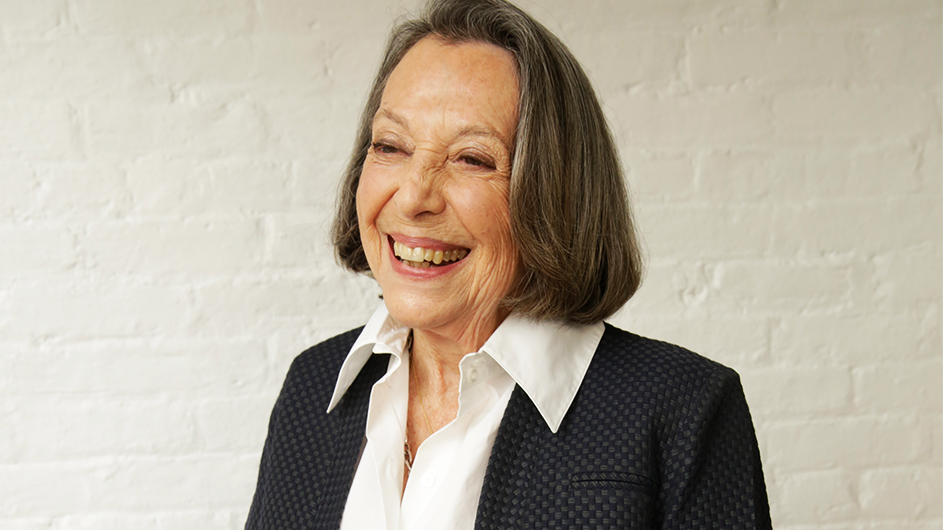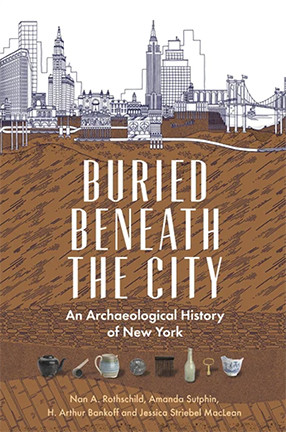An Archaeological History of New York Built on Everyday Artifacts
The new book, “Buried Beneath the City,” retells the story of New York's past from ancient indigenous tools to a Seneca Village teapot.

Bits and pieces of the lives led long before the age of skyscrapers are scattered throughout New York City, found in backyards, construction sites, and parks—indigenous tools used thousands of years ago, wine jugs from a 17th-century tavern, raspberry seeds sown in Brooklyn gardens.
Buried Beneath the City: An Archaeological History of New York by Nan Rothschild, professor emerita of anthropology; Amanda Sutphin; H. Arthur Bankoff; and Jessica Striebel MacLean uses urban archaeology to retell the history of the city, from the deeper layers of the past to the topsoil of recent events. The book explores the ever-evolving city and the day-to-day world of its residents through artifacts, starting with the first traces of societies more than 10,000 years ago to the detritus of Dutch and English colonization and the burgeoning city’s transformation into a modern metropolis.
Rothschild discusses the book with Columbia News, as well as how the archaeological record can add to written history, and why Central Park designer Frederick Law Olmsted would be a good dinner guest.
How did this book come about?
When the New York City Archaeological Repository was established in 2014, with some publicity, an editor at Columbia University Press wrote to me and asked “if there was a book in it.” I checked with the archaeologists at the Landmarks Preservation Commission (which manages the repository), and we decided to give it a shot.

What can urban archaeology—the preservation of everyday objects—reveal that adds to the documentary record of written history?
Urban archaeology (and all archaeology) provides information that is complementary to the written record. Each has its strengths and weaknesses. For example, the archaeological record offers data on diet, health, and the environment—including deposits of animal (and bird and fish) bones as well as fossilized plant remains.
Environmental change is such a major issue today, but we know that as soon as Europeans arrived here, they began altering the environment. In pre-European deposits, oysters were very large, much larger than today. But they were overharvested, and their beds became polluted, so they are now quite small. And the sheepshead used to be a dominant fish in local waters, but has completely disappeared. Changing the shoreline through landfill, and filling swamps created different ecological conditions, eliminating niches for the small crustaceans and fish that sheepshead ate.
Another important aspect of archaeological data pertains to the lives of those who were often ignored in the historical record—Black communities are a good example. The excavation of the African Burial Ground and the Commons Historic District in Lower Manhattan in the 1990s and Seneca Village in Central Park in 2011 offer important insights into African American lifeways. Burials show the stresses under which enslaved people had to survive. Seneca Village was a strong, middle-class, 19th-century Black community that could have lasted had it not been evicted under eminent domain for the construction of Central Park.
RELATED CONTENT
What have you read lately that you would recommend, and why?
I just finished The Dictionary of Lost Words by Pip Williams, which I really enjoyed, both for the story and for its message about the power of language, and whose stories may have been left out.
What’s next on your reading list?
I am planning to read The Overstory by Richard Powers.
You're hosting a dinner party. Which three academics or scholars, dead or alive, would you invite, and why?
I would invite architect, professor, and writer Witold Rybczynski; geographer and professor David Harvey; and landscape architect Frederick Law Olmsted, who designed Central Park. I want to have a conversation about cities. I began my career with an interest in urban life, structure, and planning, and I have always found the formation of communities within cities intriguing.